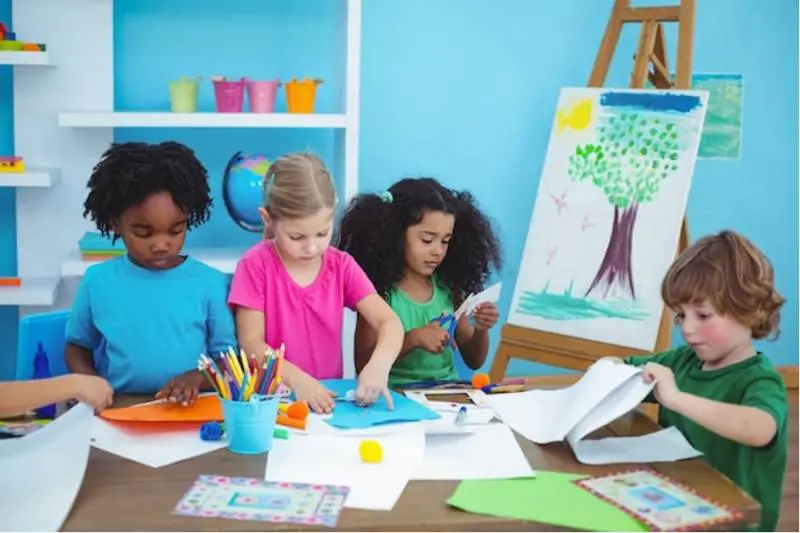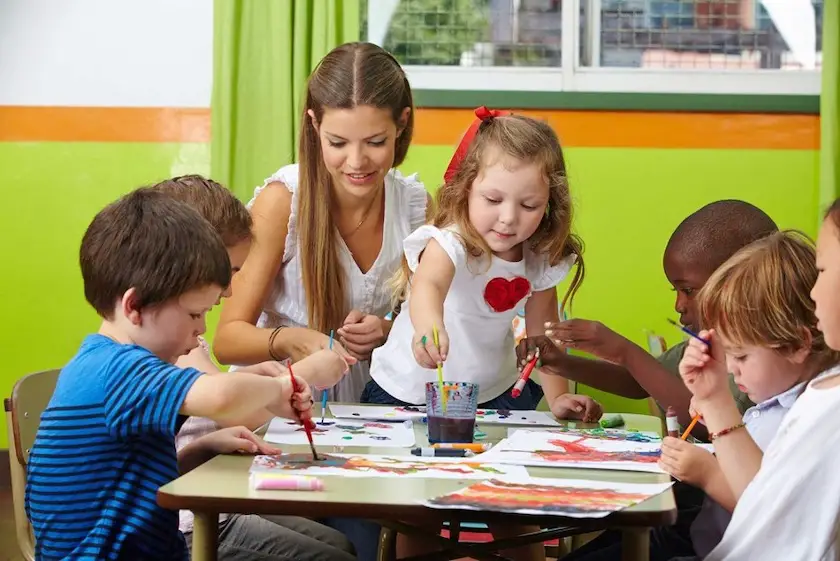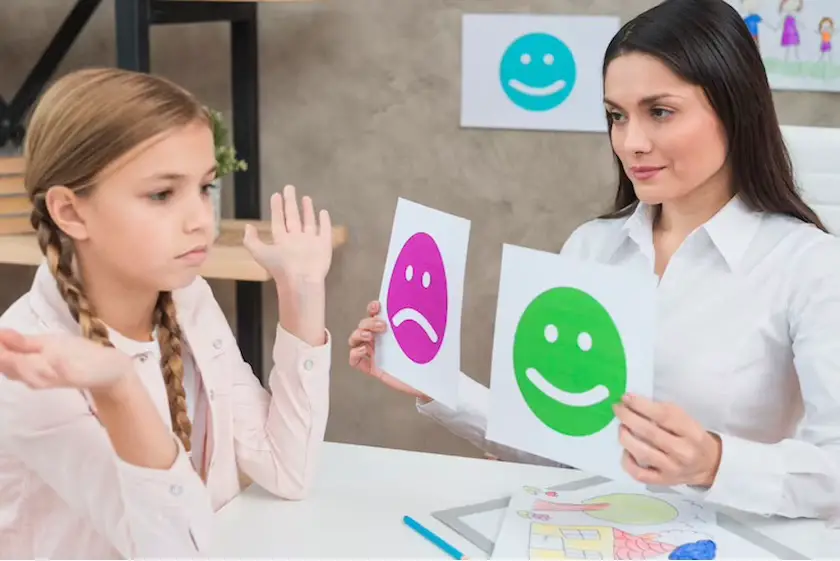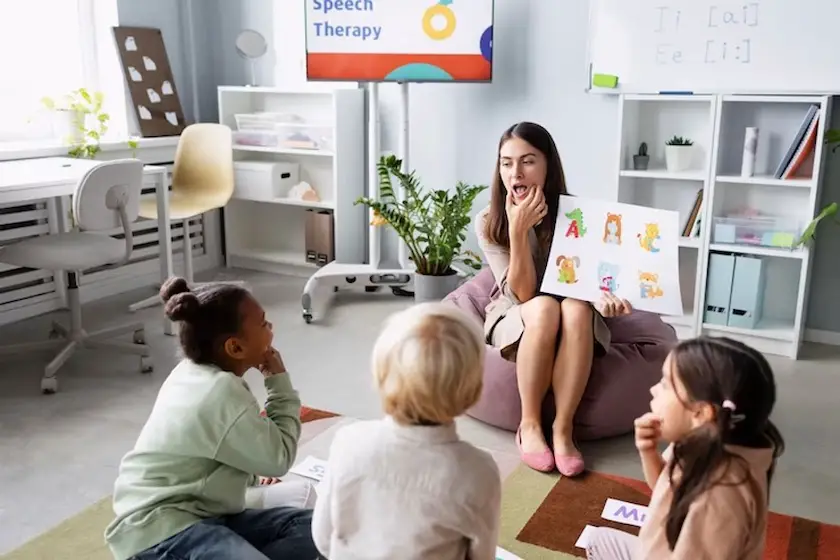Benefits of Art & Craft in Early Childhood Education Not to Ignore

Art and craft classes in early childhood education allow children to explore their imagination, express themselves freely, and develop critical skills that will benefit them throughout their lives.
While traditional subjects like math and science are important, incorporating art and creativity into the curriculum can have significant and lasting benefits.
In this article, we will explore the numerous advantages of integrating art and creativity in early childhood education.
Why Is art important for kids?
Art is one of the most effective ways for kids to develop their creativity. The ability to think outside the box and string together seemingly unrelated ideas is what defines creativity. This ability to think creatively can lead to solutions to major problems in the world and breakthroughs of all kinds, from developing new medicines to creating artificial intelligence.
As such, creativity is one of the most important things in life, and art helps kids to foster it. Early childhood education in the arts has even been linked with better academic performance in all subjects. Art also leads to a more skilled workforce and less crime, which benefits all of us.
However, early childhood education in general is often overlooked, and it’s one of the first programs to be cut when budgets are tight. But early childhood education produces many benefits for both individuals and society as a whole. This includes higher academic achievement, fewer special needs students, and lower rates of welfare dependency.
A growing body of research also demonstrates that learning through exploration—allowing young learners to craft their own education and follow their interests—has the power to transform the educational experience and language development in children. It’s the key to fostering creativity and helping children become independent, confident learners.

Here are some of the top benefits of incorporating art and craft skills in early childhood education:
1. Art enhances cognitive development
When children are allowed to create and express themselves with art, they learn about shapes, colors, patterns, symmetry, and more. These are important skills for cognitive development that help with math learning as well.
Another benefit of art is the physical development that it encourages. Drawing, painting, and sculpting with clay help children develop fine motor skills that are essential for writing and other everyday activities.
In addition, using a pencil grip correctly and holding the brush or clay in their hands helps them improve their hand-to-eye coordination. This is important for cognitive development and a strong foundation for future learning. It also promotes the development of a healthy balance between left and right brain activities.
Many forms of art require a child to take in visual information, interpret it and then recreate it on paper. This helps them develop their visual-spatial abilities, which are becoming increasingly important in today’s world.
Process art—where kids manipulate materials without working toward a specific end product—is also beneficial for kids’ cognitive development. It allows them to explore and experiment with different media, while developing skills like patterning and cause and effect (i.e., if they press hard on the crayon, it will make the color darker). It’s this critical thinking and planning that can later translate to other areas of their education—and even into future career endeavors.
Furthermore, creative arts encourage problem-solving. The open-ended process of art provides opportunities for making choices, coming to conclusions, second-guessing decisions, and evaluating outcomes (good or bad). This can help kids to be more flexible thinkers, which is beneficial in all aspects of their lives, even if they decide to pursue more science-based interests as adults.
2. It promotes emotional and social development

Art provides a safe and non-judgmental space for children to express their emotions, thoughts, and experiences. Through art, children can communicate their feelings, whether it's joy, sadness, anger, or confusion. This self-expression promotes emotional intelligence, empathy, and self-awareness.
Additionally, engaging in collaborative art activities encourages social interaction, cooperation, and communication among children. It fosters a sense of community, builds friendships, and teaches them how to work together towards a common goal.
Creative arts have been shown to promote social, emotional, and language development in children. Children who engage in creative activities become more empathetic and understand others better, which can lead to stronger connections with peers. It is also important for kids to learn to be comfortable expressing themselves, and art allows them to do so in a safe and supportive environment.
A study published by the National Endowment for the Arts found that children’s participation in arts activities has a positive impact on their social-emotional development. The research reviewed 18 studies, with most focusing on music and dance programs for children from birth to 8 years of age. Further research is needed to examine how various artistic disciplines affect different children and to understand the long-term effects of engaging in these activities.
For children, artistic development can help with social-emotional development by teaching them how to interact with others and take the perspective of someone else. Whether they are trying to solve a problem with an art project or simply playing around with different materials, the process of creating helps them learn how to compromise and collaborate, which are essential social skills.
3. It encourages imagination and creativity
Art provides a unique opportunity for children to develop imagination and creativity. This is because it allows them to express their emotions and ideas in a creative and engaging way. It also helps them to develop cognitive skills such as patterning and cause and effect.
Engaging in art nurtures a child's imagination and creative thinking. By exploring various art forms, children can create limitless possibilities, think outside the box, and embrace their individuality. Art encourages them to generate new ideas, experiment with different materials, and find innovative solutions to problems. These imaginative skills will be invaluable as they grow older, helping them become creative thinkers and problem solvers in all aspects of life.
Furthermore, art can be a fun and exciting way for children to practice their writing skills. As they experiment with drawing different shapes, their emerging scribbles can eventually become letters and words.
Also, creative activities can help to foster a love of learning and curiosity in young children. This can make them more likely to take a positive approach to subjects like science, math, and English. It can also change the way they view these disciplines by making them more enjoyable and fun.
4. It boosts confidence and self-esteem
Engaging in art activities provides children with a sense of accomplishment and pride in their creations. Regardless of skill level, art encourages children to take risks, make choices, and trust their own judgment. When children receive positive feedback and encouragement from teachers and peers, it boosts their self-esteem and confidence. They learn to appreciate their unique talents and develop a positive self-image, which can have a profound impact on their overall well-being.
Kids who regularly participate in art activities have higher self-esteem than kids who do so less frequently. In fact, the boost to a child’s self-esteem is doubled when they are regularly involved in the arts with their parents!
When kids are engaged in creative art activities, they often receive positive feedback from their teachers and peers. This reassures them that their hard work has been appreciated and builds confidence in themselves.
In addition, children who take part in art-related activities create a sense of accomplishment when they have achieved something new and unique to them. This can help them build resilience in the face of challenge or change, which will be invaluable later in life.
5. It sharpens language and communication skills

Art can be a powerful tool for communication skills and language development in children in early-stage education. When children create art, they often narrate their thought processes, describe their artwork, or tell stories related to their creations. This verbal expression helps develop vocabulary, sentence structure, and storytelling abilities.
Furthermore, art provides an alternative means of communication for children who may struggle with verbal expression, allowing them to communicate their ideas and feelings visually. As kids learn to express themselves in ways they can’t with words, they gain the ability to resolve challenges and handle difficulties. The arts teach children to understand that there’s more than one way to look at something, which can help them become better problem-solvers and adapt to change.
6. It fosters appreciation for diversity and culture
Art is a universal language that transcends cultural boundaries. Early exposure to art from different cultures broadens children's understanding and appreciation for diversity. Through art, children learn about different traditions, customs, and perspectives. They gain empathy and respect for the cultural heritage of others, promoting a more inclusive and tolerant society.
As children develop their creativity, they become more aware of different cultures and other people in the world around them. They can then use their artistic skills to communicate these discoveries to others.
Conclusion
There is a wide range of benefits of art and craft skills integration into early-stage education for young learners. From cognitive and emotional development to fostering imagination and boosting self-esteem, art provides a holistic approach to education.
By encouraging creativity and artistic self-expression, we nurture the next generation of thinkers, innovators, and problem solvers. It is essential, therefore, to recognize the significance of art in early childhood education and provide ample opportunities for children to explore their creative potential. By doing so, we lay a strong foundation for their future success and well-being.
However, teachers are the deciding factor on whether or not children’s artistic abilities and creativity are recognized, encouraged, and fostered, or stifled. Educators must be empowered to change the cultural mindset that surrounds play and support schools in offering high-quality play opportunities for all children regardless of a child’s racial or socioeconomic status.













![18 Brutal Failures Successful Entrepreneurs Had to Overcome [Infographic] Jeff Bezos-amazon-successful-entrepreneurs-overcome-brutal-failures](/sites/default/files/styles/sidebar_wide_rectangle/public/successful-entrepreneur-Jeff%20Bezos-amazon.jpg?itok=ZGMhs3Si)























